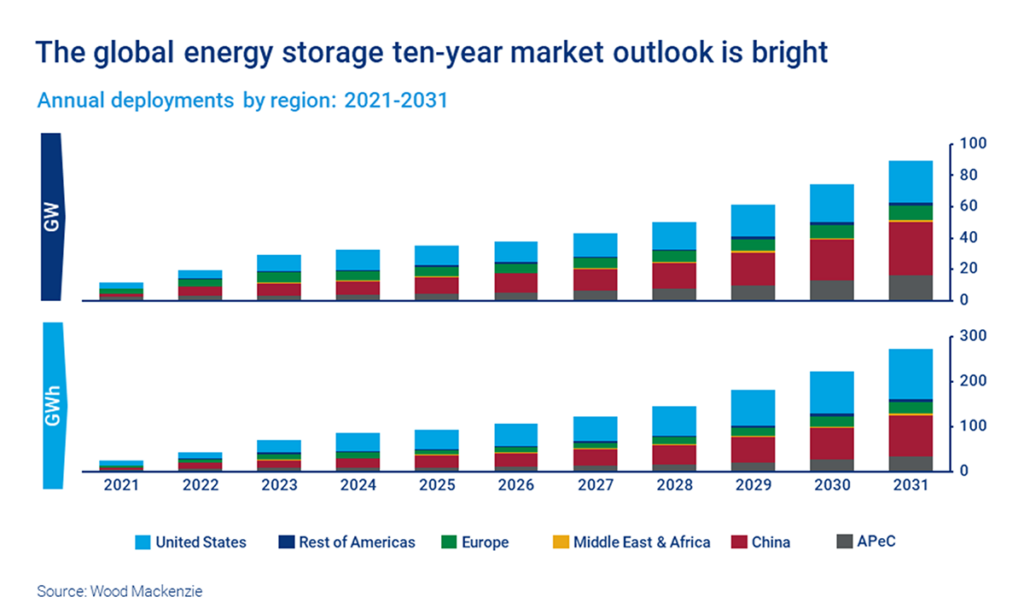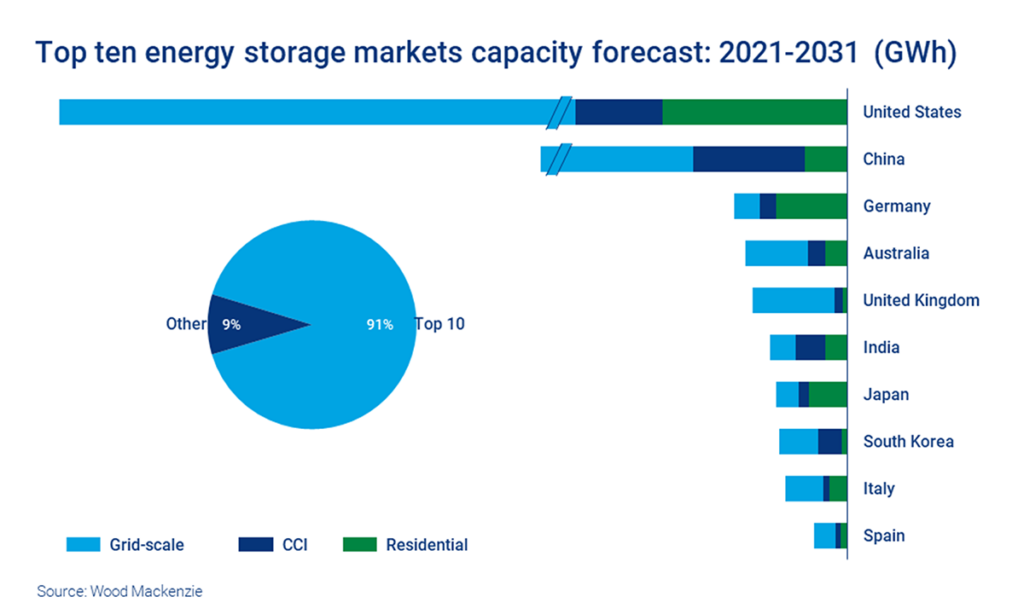The global energy storage market is poised to reach the 500 GW milestone by 2031, with the U.S. and China accounting for 75% of global demand in a highly consolidated market.
The US remains the market leader in energy storage, but disruptions from trade measures have led to a decline in demand. The North American country will be a 27 GW annual market by 2031; 83% of that volume is grid-scale.
However, forecasts in Wood Mackenzie‘s new report show that the U.S. has seen a reduction in demand in 2022 and 2023 of 34% and 27%, respectively, produced by disruptions in the grid and distribution segments following an antidumping and countervailing duty (AD/CVD) lawsuit in the second quarter.

An executive order, issued on June 6, brought some relief, announcing a two-year postponement of the new duties on solar cells and modules imported from the countries named in the investigation – Cambodia, Malaysia, Thailand and Vietnam. Most projects are now expected to be delayed, rather than cancelled, and a short-term rebound is possible.
You may also be interested in > S&P Global: “Energy Transition Faces Fuel Tax Problem”
REPowerEU: the European plan
Project economics are also a challenge in Europe. Although the energy storage market is set to grow fivefold by 2031, medium-term growth could stagnate if policies fail to improve the economics.
Wood Mackenzie says Europe is set to receive a 12 GWh boost from the European Commission’s REPowerEU plan, published in May 2022, which although it does not set a target for energy storage, rising renewable supply targets will drive demand for flexible energy solutions, including such storage assets.
Moreover, the plan promises to ease permitting processes for both storage and PV systems, facilitating the accelerated growth of new grid-scale and distributed energy projects.
So far, European demand lags behind that of China and the U.S. The distributed storage segment continues to dominate, but dramatic growth in renewables supply, gas supply shortages and interconnector overloads may drive the region’s grid-scale market over the next decade, the consultancy notes.

China, dominant
The Asian giant leads the Asia-Pacific energy storage market and sets the pace for global growth, but the cost-effectiveness of storage projects in the region remains a challenge for sustainable development.
Moreover, national policies are focusing on how to improve energy storage cost offsets and increase economic incentives for projects.
China’s Fourteenth Five-Year Energy Storage Development Implementation Plan, released in March 2022, reiterated the importance of storage in its decarbonization plans, and proposes that by 2025 it will enter the large-scale development phase, with system costs reduced by more than 30%, thanks to improved technology performance.
Since the plan was published, 12 provinces and cities have announced cumulative energy storage deployment targets for 2025, totaling about 40 GW.
To access the full Wood Mackenzie report, click here




